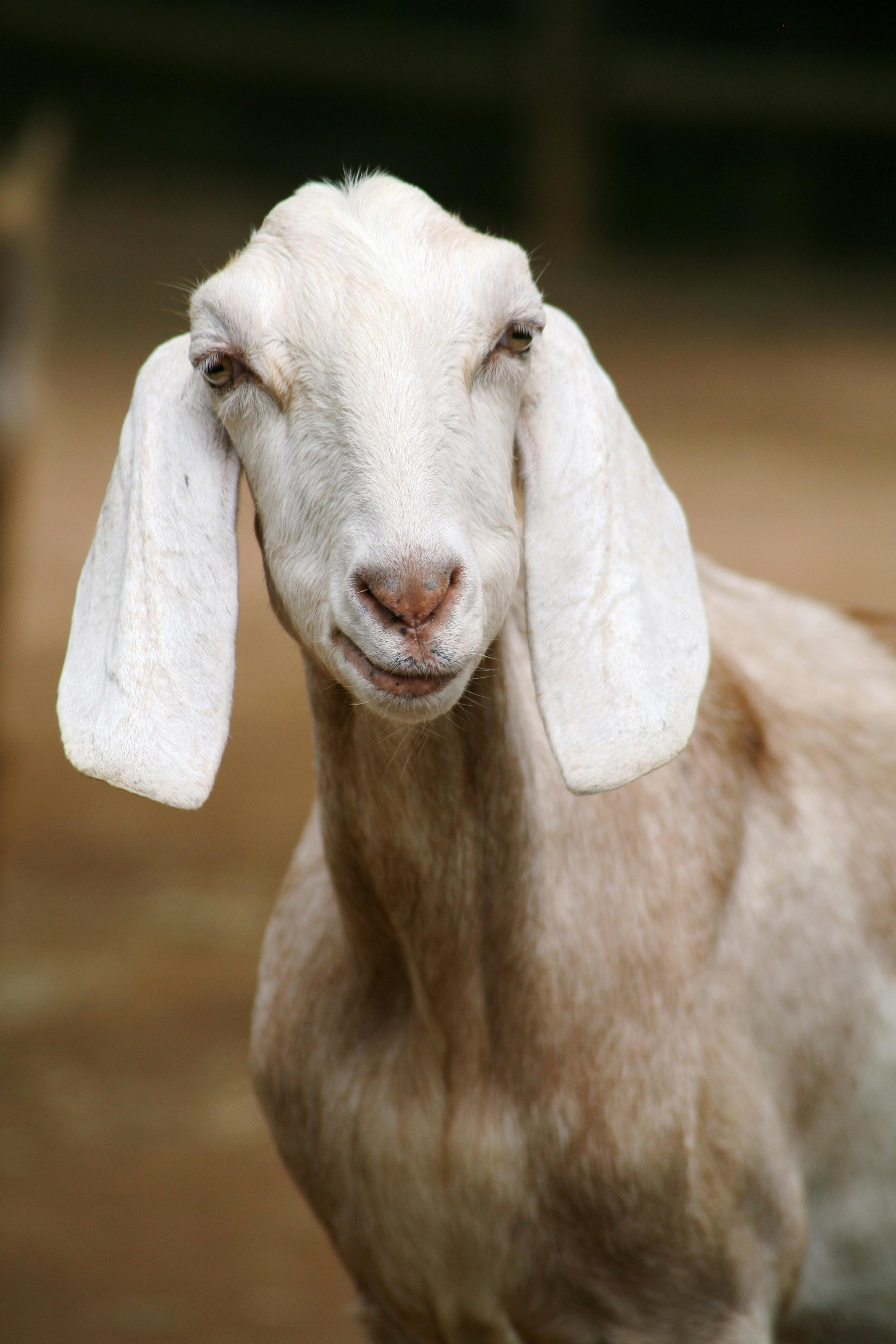Cerebrocortical necrosis in small ruminants in Argentina: a case series
DOI:
https://doi.org/10.14409/favecv.2024.23.e0037Keywords:
sheep, goat, polioencephalomalacia, cerebrocortical necrosis, ArgentinaAbstract
Several neurological diseases can affect small ruminants. Cerebrocortical necrosis (CCN) is a pathology associated with different etiologies. One of them, nutritional polioencephalomalacia (PEM) is a common metabolic disease associated to intensive production systems. We report eight outbreaks of CCN in small ruminants (goats and sheep) of different regions of Argentina, probably associated to ruminal acidosis, elevated levels of sulfur in the forage and water and/or suspected lead poisoning. Affected sheep and goats developed sudden neurological signs such as ataxia, amaurosis, opisthotonus, dissociation, lethargy, hypextension of the limb, lateral decubitus, and death. Postmortem examination of six animals was performed, and gross lesions were scarce, characterized as cerebrocortical malacia. Histologically, severe cerebrocortical laminar necrosis was observed. Based in these findings and/or response to thiamine and dexamethasone treatment in four outbreaks, a diagnosis of CCN was achieved, of different suspected origins. This disease is commonly associated with intensive production systems, and therefore, coud be underdiagnosed in extensive conditions, more frequently used for small ruminant rearing.
References
Baker JC. 1987. Lead poisoning in cattle. Vet. Clin. N. Am. Food Anim. Pract. 3: 137-147. DOI: 10.1016/s0749-0720(15)31185-3
Barbosa J, Martins F, Ferreira Filho C, Barbosa C, Vieira E, Silva R, Lopes C, Silveira N, Oliveira C, Brito M, Masiero Salvarani F. 2023. Polioencephalomalacia in buffaloes in the Amazon Biome. Animals 13: 3131. DOI: 10.3390/ani13193131
Beck C, Dart A, Collins M, Hodgson D, Parbery J. 1996. Polioencephalomalacia in two alpacas. Aust. Vet. J. 74: 350-352. DOI: 10.1111/j.1751-0813.1996.tb15442.x.
Bonadiman H, Schwertz C, Sousa S, Bianchi R, Caprioli R, Dalto A, Pavarini S, Driemeier D. 2018. Acute rumenitis due to lipid overload in a bovine. Ciência Rural 48: e20180074. DOI: 10.1590/0103-8478cr20180074
Cagnini D, da Cunhal P, Pantoja J, Badial P, Oliveira-Filho J, Araújo-Junior J, Alfieri A, Borges A. 2015. Histopathological, immunohistochemical, and molecular study of BHV-5 infection in the central nervous system of experimentally infected calves. Pesq. Vet. Bras. 35: 337-343. DOI: 10.1590/S0100-736X2015000400004
Câmara A, Batista J, Blanco B. 2018. Polioencephalomalacia in ruminants from the semi-arid region of Rio Grande do Norte, Brazil. Semina: Ciências Agrárias 39: 231-240. DOI: 10.5433/1679-0359.2018v39n1p231
Castro D, Margineda C, Cantón G. 2019. Polioencephalomalacia associated with excess dietary sulfur in feedlot cattle [Polioencefalomalacia asociada a exceso de azufre dietético en bovinos de engorde a corral]. FAVE Sección Ciencias Veterinarias 18: 45-48. DOI: 10.14409/favecv.v18i2.8363
Duarte M, Bezerra Júnior P, Lima D, Bomjardim H, Oliveira C, Silva N, Barbosa J. 2014. Salt poisoning outbreak in sheep in the state of Pará [Surto de intoxicação por sal em ovinos no estado do Pará]. Pesq. Vet. Brasil. 34: 1061-1068. DOI: 10.1590/S0100-736X2014001100004
da Cunhal P, Bandarra P, Dias M, Borges A, Driemeier D. 2010. Outbreak of polioencephalomalacia in cattle consuming high sulphur diet in Rio Grande do Sul, Brazil [Surto de polioencefalomalacia por ingestão excessiva de enxofre na dieta em bezerros no Rio Grande do Sul]. Pesq. Vet. Bras. 30: 613-617. DOI: 10.1590/S0100-736X2010000800001
Devendra C. 2010. Concluding synthesis and the future for sustainable goat production. Small Ruminant Res. 89: 125-130. DOI: 10.1016/j.smallrumres.2009.12.034
Evans W, Evans I, Humphreys D, Lewin B, Davies W, Axford R. 1975. Induction of thiamine deficiency in sheep, with lesions similar to those of cerebrocortical necrosis. J. Comp. Pathol. 85:253-267. DOI: 10.1016/0021-9975(75)90067-5
Gould D. 2000. Update on sulfur-related polioencephalomalacia. Vet. Clin. N. Am. Small Anim. Pract. 16: 481-496. DOI: 10.1016/s0749-0720(15)30082-7
Gould D. 1998. Polioencephalomalacia. J. Anim. Sci. 76: 309-314. DOI: 10.2527/1998.761309x.
Haydock D. 2003. Sulfur-induced polioencephalomalacia in a herd of rotationally grazed beef cattle. Can. Vet. J. 44: 828-829.
Karapinar T, Dabak M, Kizil O. 2010. Thiamine status of feedlot cattle fed a high-concentrate diet. Can. Vet. J. 51: 1251-1253.
Kiupel M, VanAlstine W, Chilcoat C. 2003. Gross and microscopic lesions of polioencephalomalacia in a llama (Lama glama). J. Zoo Wildl. Med. 34: 309-313. DOI: 10.1638/01-081.
Koestner A, Jones T. 1997. The Nervous System (pp.1272-1274). En: Jones T, Hunt R, King N (eds.), Veterinary Pathology. 6º edition. Williams & Wilkins, Philadelphia, USA.
Lima E, Riet-Correa F, Tabosa I, Dantas A, Medeiros J, Sucupira Júnior G. 2005. Polioencephalomalacia in goats and sheep in the semiarid region of northeastern Brazil [Polioencefalomalacia em caprinos e ovinos na região semi-árida do Nordeste do Brasil]. Pesq. Vet. Bras. 25: 9-14. DOI: 10.1590/S0100-736X2005000100003
Little P. 1978. Identity of fluorescence in polioencephalomalacia. Vet. Rec. 103: 76. DOI: 10.1136/vr.103.4.76
Low J, Scott P, Howie F, Lewis M, FitzSimons J, Spence J. 1996. Sulphur-induced polioencephalomalacia in lambs. Vet. Rec. 138: 327-329.
Maxwell J. 1980. Polioencephalomalacia in a goat. Aust. Vet. J. 56: 352.
McSporran K. 1988. Polioencephalomalacia in goats. Surveillance 15: 24.
Nogueira A, Souza R, Santos B, Pinto A, Ribas N, Lemos R, Sant’Ana F. 2010. Experimentally amprolium-induced polio-encephalomalacia in cattle [Polioencefalomalacia experimental induzida por amprólio em bovinos]. Pesq. Vet. Bras. 30: 631-636. DOI: 10.1590/S0100-736X2010000800004
Owens F, Secrist D, Hill W, Gill D. 1998. Acidosis in cattle: a review. J. Anim. Sci. 76: 275-286. DOI: 10.2527/1998.761275x
Rammell C, Hill J. 1986. A review of thiamine deficiency and its diagnosis, especially in ruminants. N. Z. Vet. J. 34: 202-204. DOI: 10.1080/00480169.1986.35350
Ramos J, Ferrer L, García L, Fernández A, Loste A. 2005. Polioencephalomalacia in adult sheep grazing pastures with prostrate pigweed. Can. Vet. J. 46: 59-61.
Riet-Correa G, Duarte M, Barbosa J, Oliveira C, Cerqueira V, Brito M, Riet-Correa F. 2006. Meningoencephalitis and polioencephalomalacia caused by bovine herpesvirus-5 in the state of Pará, northern Brazil [Meningoencefalite e polioencefalomalacia causadas por Herpesvírus bovino-5 no estado do Pará]. Pesq. Vet. Brasil. 26: 44-46. DOI: 10.1590/S0100-736X2006000100009
Thornber E, Dunlop R, Gawthorne J, Huxtable C. 1979. Polioencephalomalacia (cerebrocortical necrosis) induced by experimental thiamine deficiency in lambs. Res. Vet. Sci. 26:378-380.
Sant’Ana F, Barros C. 2010. Polioencephalomalacia in ruminants in Brazil. Braz. J. Vet. Pathol. 3: 70-79.
Scarratt W, Collins T, Sponenberg D. 1985. Water deprivation-sodium chloride intoxication in a group of feeder lambs. J. Am. Vet. Med. Assoc. 186: 977-978.
Sivaraman S, Vijayakumar G, Venkatesakumar E, Ponnuswamy K. 2016. Clinical management of polioencephalomalacia in goats-a retrospective study of 18 cases. Indian Vet. J. 93: 70-72.
Smits J, Wobeser G. 1990. Polioencephalomalacia in a captive fallow deer. Can. Vet. J. 31: 300-301.

Published
How to Cite
Issue
Section
License
Copyright (c) 2024 Yolanda M. MARRON, Juan F. MICHELOUD, Agustín MARTINEZ, Timoteo TESSI, Martina PACHIANI, Lita E. VILATUÑA, Agustín AVELLANEDA-CACERES, Mariana DACAL, Alvaro F. RUIZ, María V. SCIOLI, Eleonora L. MORREL, Juan A. GARCIA, Germán J. CANTON

This work is licensed under a Creative Commons Attribution-NonCommercial-ShareAlike 4.0 International License.
FAVE Sección Ciencias Veterinarias ratifies the open access model, in which contents (in full) are available free to anyone in the internet. The costs of production and publication are not transfered to the authors. This policy intends to break social and economical barriers that generate inequities in the access to information, and for the publication of research results.
All articles can be accessed at http://bibliotecavirtual.unl.edu.ar/publicaciones/index.php/FAVEveterinaria/issue/current/, under license Creative CommonsAtribución-NoComercial-Compartir Igual 4.0 Internacional.










